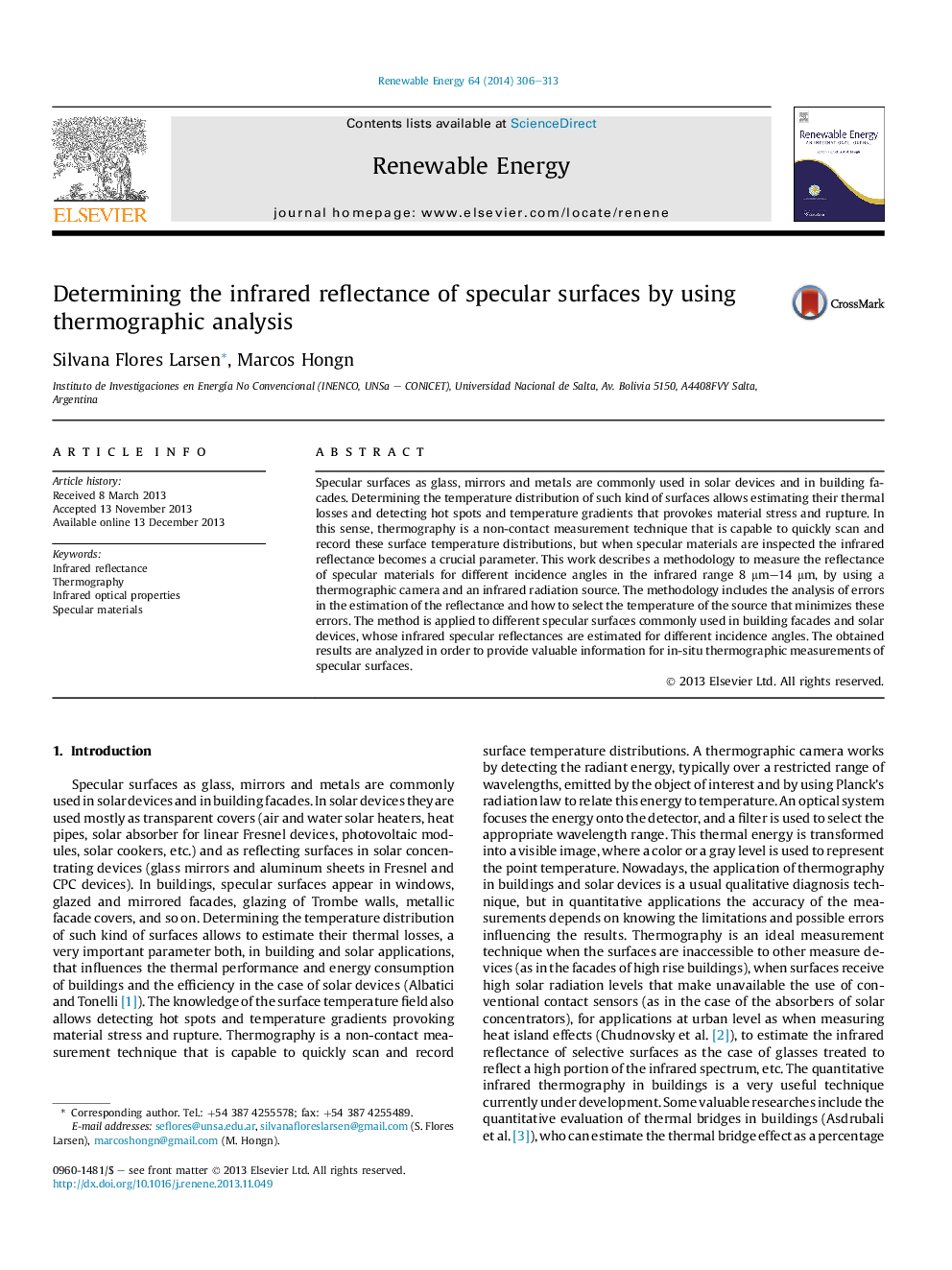| Article ID | Journal | Published Year | Pages | File Type |
|---|---|---|---|---|
| 300101 | Renewable Energy | 2014 | 8 Pages |
•A methodology to measure the infrared reflectance of specular materials.•A thermographic camera and an infrared radiation source were used.•The analysis of errors and how to select the temperature of the source were described.•Specular surfaces of glass and metals were measured at varying angles.•Methodology proved to be adequate.
Specular surfaces as glass, mirrors and metals are commonly used in solar devices and in building facades. Determining the temperature distribution of such kind of surfaces allows estimating their thermal losses and detecting hot spots and temperature gradients that provokes material stress and rupture. In this sense, thermography is a non-contact measurement technique that is capable to quickly scan and record these surface temperature distributions, but when specular materials are inspected the infrared reflectance becomes a crucial parameter. This work describes a methodology to measure the reflectance of specular materials for different incidence angles in the infrared range 8 μm–14 μm, by using a thermographic camera and an infrared radiation source. The methodology includes the analysis of errors in the estimation of the reflectance and how to select the temperature of the source that minimizes these errors. The method is applied to different specular surfaces commonly used in building facades and solar devices, whose infrared specular reflectances are estimated for different incidence angles. The obtained results are analyzed in order to provide valuable information for in-situ thermographic measurements of specular surfaces.
